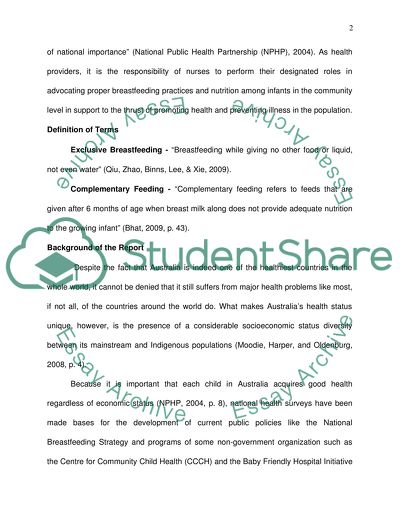Cite this document
(Australian Infants: Nutrition and Breastfeeding Assignment, n.d.)
Australian Infants: Nutrition and Breastfeeding Assignment. Retrieved from https://studentshare.org/social-science/1569852-report-on-nutrition-and-breastfeeding
Australian Infants: Nutrition and Breastfeeding Assignment. Retrieved from https://studentshare.org/social-science/1569852-report-on-nutrition-and-breastfeeding
(Australian Infants: Nutrition and Breastfeeding Assignment)
Australian Infants: Nutrition and Breastfeeding Assignment. https://studentshare.org/social-science/1569852-report-on-nutrition-and-breastfeeding.
Australian Infants: Nutrition and Breastfeeding Assignment. https://studentshare.org/social-science/1569852-report-on-nutrition-and-breastfeeding.
“Australian Infants: Nutrition and Breastfeeding Assignment”, n.d. https://studentshare.org/social-science/1569852-report-on-nutrition-and-breastfeeding.


